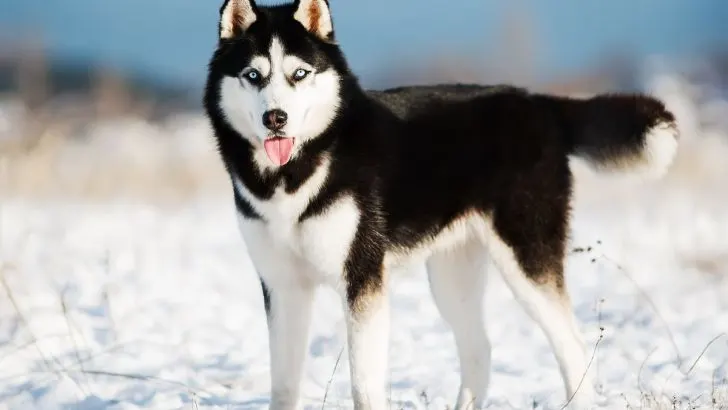Before bringing a Husky breed dog to your home, do your research. Talk to people who own this breed to understand their needs first-hand.
Huskies have a well-known reputation for being fussy eaters. However, they are also high-energy dogs, meaning they need an excellent source of nutrition to keep them fully fueled each day, or they can suffer from weight loss and other conditions easily.
The Husky can also develop separation anxiety and be a destructive dog easily if left alone for extended periods or not when they are not exercised enough.
Do not choose this dog breed if you spend lots of time away from home. A dog walker or a doggy daycare might temporarily solve this problem if you are away on an odd occasion.
The Husky breed is not suited to apartment living. Their longer length of coats will drive you insane because you will find longer hairs than yours all over your apartment.
If you have a garden and you plan to let your dog play in the garden, here is some general information: Be aware that the garden fences must be pretty high, as these dogs can jump quickly over small fences and escape easily.
All The Husky Colors
The Huskies are generally furry balls of energy and need a lot of exercise. They need at least two hours per day and should be allowed to be playful with other dogs and people at home.
Huskies will fit in well with multi-dog households. They also get along very well with children and older adults.
A Husky coat’s thick, well-furred appearance is one of the breed’s most identifiable characteristics. Even though it is more or less easy to look after, a Husky coat requires a lot of attention to keep it in tip-top condition.
This breed has a dense, double coat with a soft undercoat covered by an outer coat of straight, smooth-lying guard hair, and a Husky will need regular brushing to remove any loose hair.
Brushing two or three times a week is recommended.
Huskies are not hypoallergenic, and they tend to shed a whole lot during the spring and autumn seasons – something that is known as a ‘blowing coat.’’ Extra care and more brushing will be needed during the molting season to keep their coats in good condition.
Because of their warm fur, extra care should be taken during the hotter summer months to keep your Husky cool and happy.
Good dental hygiene is necessary for any dog and should include regular brushing with vet-approved toothpaste. Ears should also be checked regularly for any infection caused by excess wax.
Huskies are known to be an immaculate breed with very little of the canine smell that is often associated with so many other dogs.
1. Grey And White
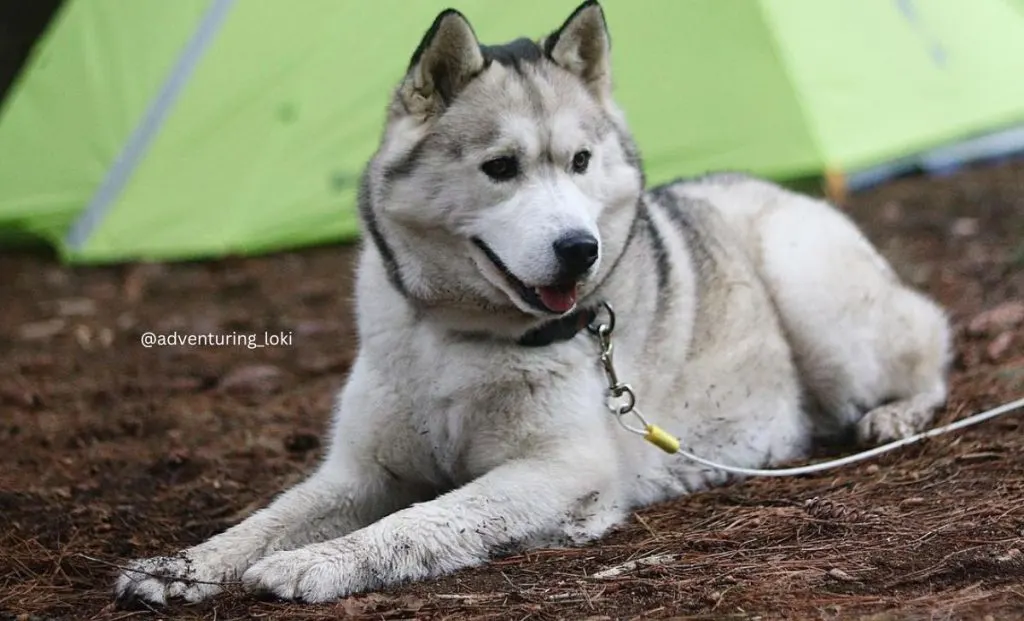
The grey and white color combination results from when the domino (eA) modifies the agouti phenotype by lowering the black pigment and boosting the yellow and cream pigment.
This color mixture can come in many shades due to other genes causing differences in black pigments (eumelanin) and yellow (pheomelanin) pigments.
Greys with low-intensity pheomelanin and less eumelanin pigment are generally called silver.
Greys with higher power pheomelanin pigment are called wolf grey or dark gray. This color typically has two or three bands due to pigment switching.
2. Agouti
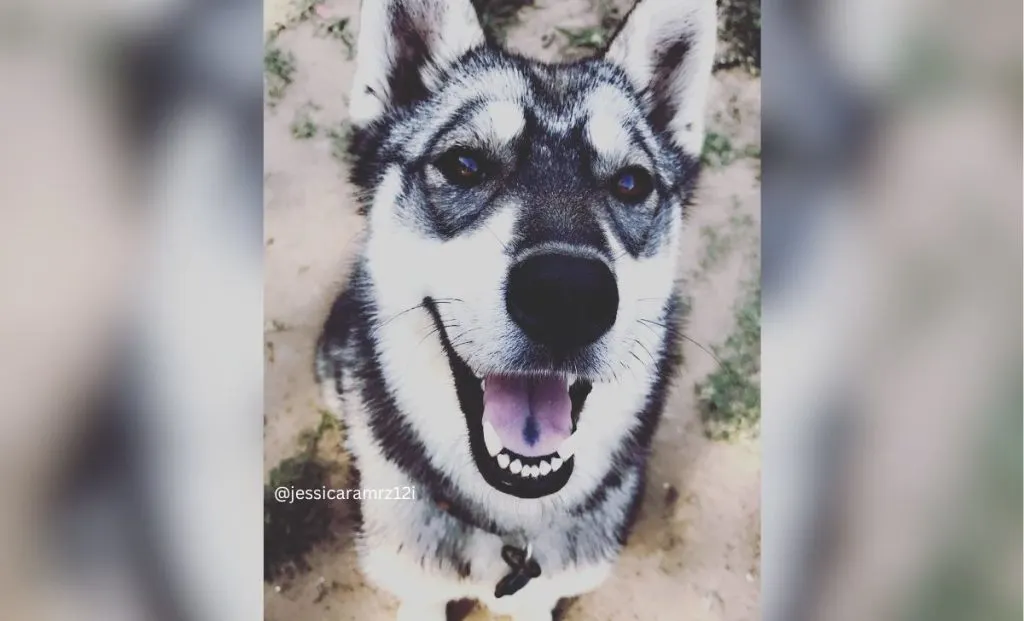
Agouti is an ancestral phenotype and is the most common one in modern grey wolves. This color combination results from a combination of alleles at different genes that give a banded coat.
The undercoat of the agouti Siberians is usually charcoal. The dog’s outer coat can be a mixture of black, tan, red, or gray.
As indicated above, two genotype mixtures give this color in the Siberian Husky. However, minor phenotypic differences between these genotypes result in significant deviations in this color.
The Em agouti has a heavy black colored mask around the nose and lips of the dog at a minimum, but it may extend to cover the eyes of the dog as well. The hairs on the dog can show anywhere from two to five or even more bands with these genotypes.
We can notice that a root band, or the dark color along the bottom of the hair, does not need to be here for this color. Many different factors can affect pigment switching on these genotypes (for example, age, diet, coat length, season, health, etc.)
3. Black & White
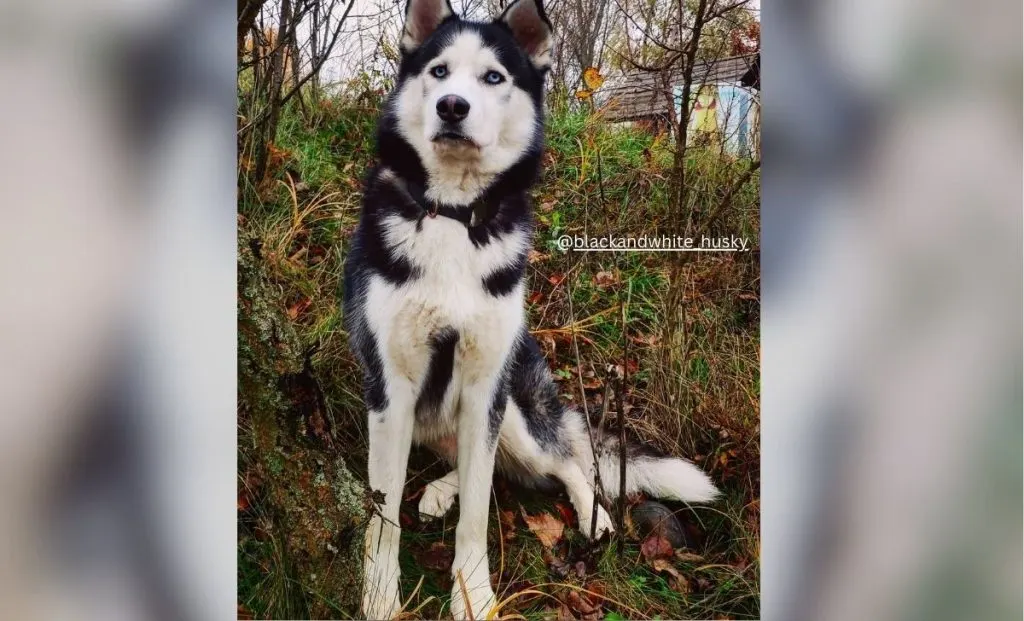
This coloration is similar to the grey variation. Still, the main difference lies in one of three different failures of function mutations in the hair cycle booster of the ASIP gene.
This mutation causes more eumelanin pigment than a grey and less pheomelanin pigment. The dog examples of this color generally have black back fur with tan to white hair on cheeks, eyebrows, and the back legs (also called tanpoint).
The color may show anywhere from one to five bands on one hair.
Expression of the domino gene and other genes can, for example, decrease the amount of the black pigment and increase the amount of the yellow pigment, resulting in a lighter back, sometimes referred to as a “dilute black and white.”
The term dilute has a different meaning in genetics, so it should not be used to describe any shade of this color.
It can also result in a jet-black dog, meaning the guard coat is a solid black, while the undercoat is black, charcoal, or dark gray. This is known as the monochrome coat.
Jet-black dogs also have black pigment on their pads, the roofs of their mouths, and even black points on the lighter color hairs.
4. KB Domino Agouti (no official name)
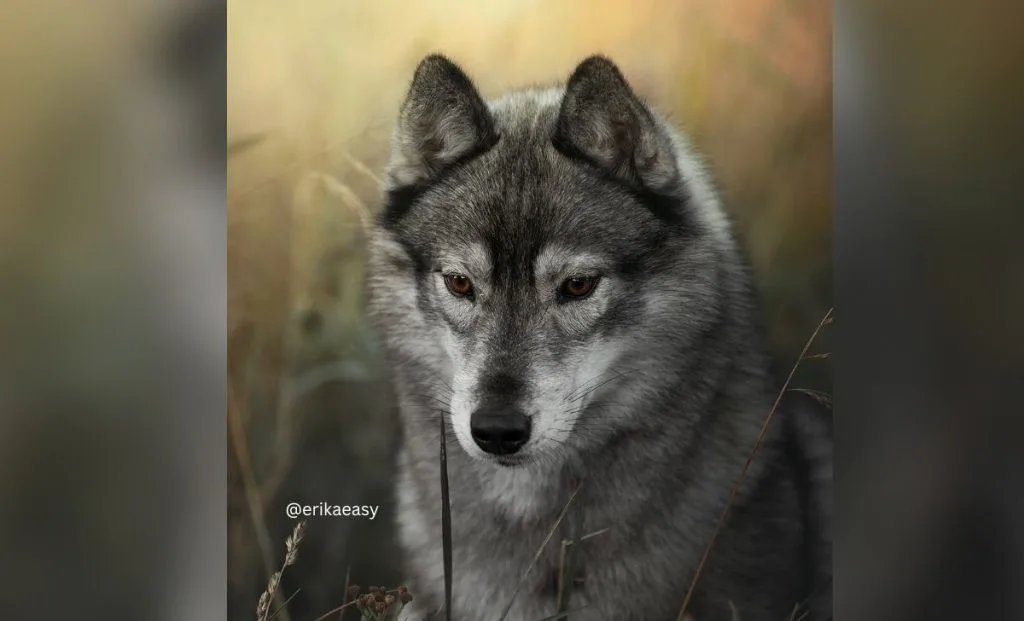
KB is an allele that causes amplified expression of the black pigment, referred to as dominant black. It usually makes the dog solid black.
When combined with the domino gene (eA), some pheomelanin pigment gets made, and we notice a color banded very similar to agouti.
Still, the face markings are typically sootier and less sharp in contrast. Although most refer to these dogs as agouti, this color has no official name.
5. Red Agouti
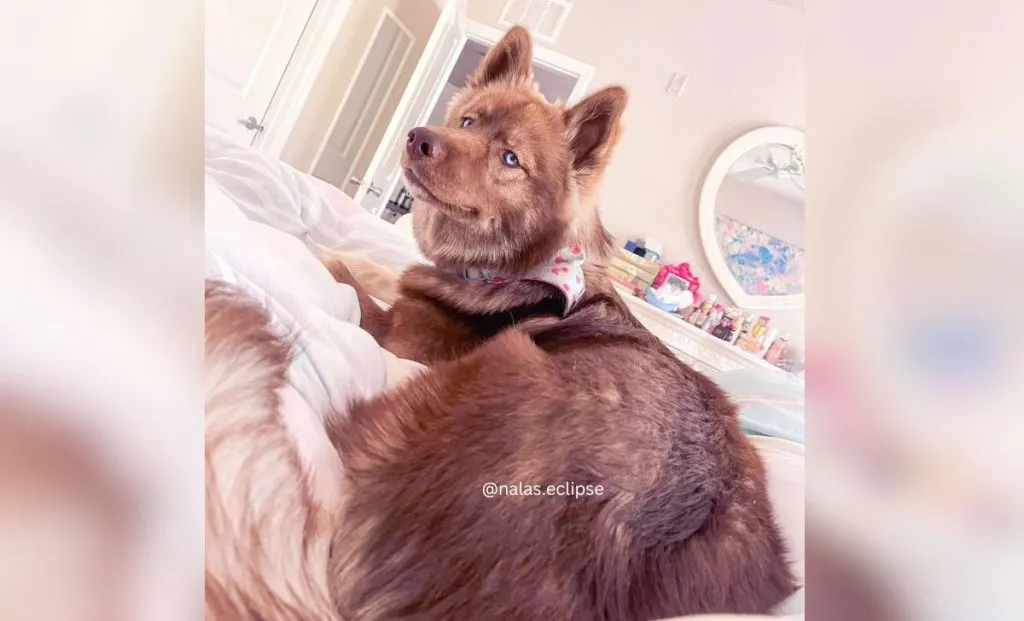
A red agouti color is more or less the same as a black-based agouti.
The only difference is that the black pigment is now brown.
These dogs need DNA testing to differentiate KB domino agouti from E or Em agouti; thus, they are lumped together here.
6. Light Red And White
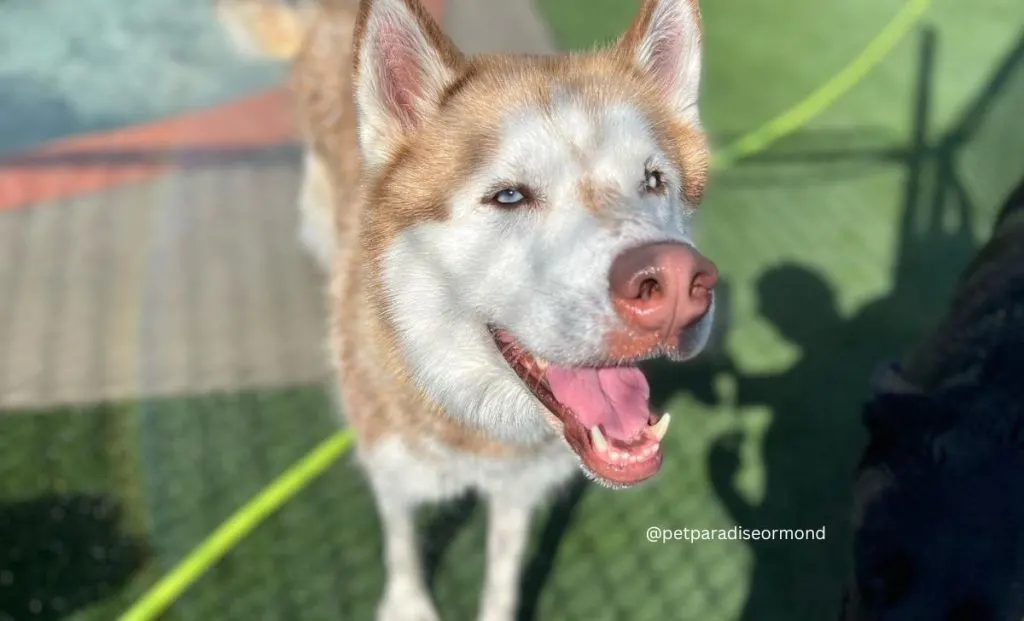
When talking in terms of the Siberian Huskies, red is brown. These dogs are the same as grey, with black pigment replaced with brown.
7. Red and White
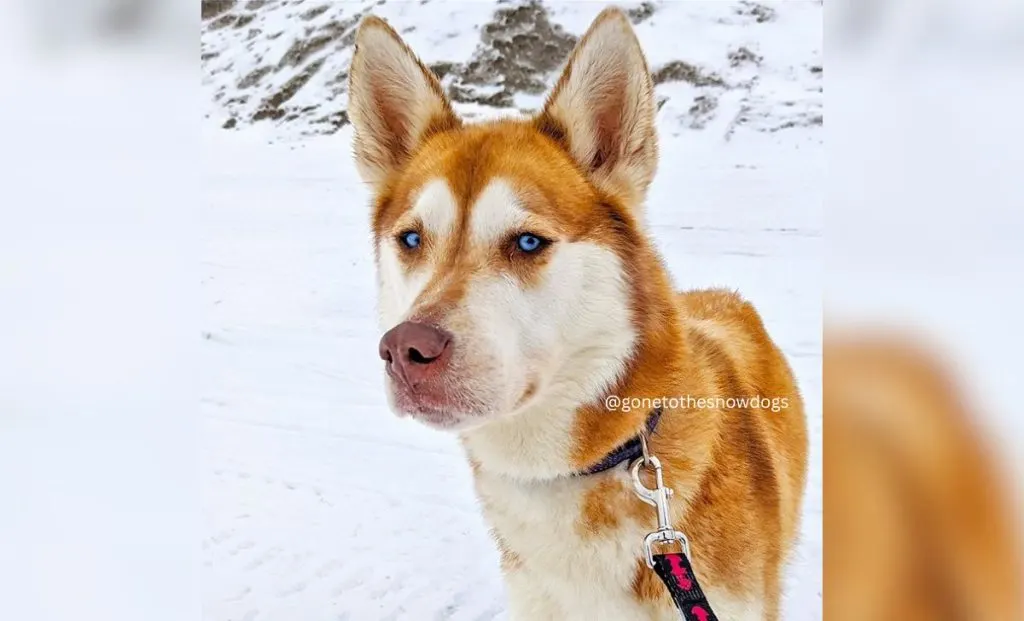
These dogs are sometimes referred to as copper and white. They are the same as black and white, with brown pigment instead of black.
8. KB Domino Tanpoint (no official name) And Tanpoint (no official name)
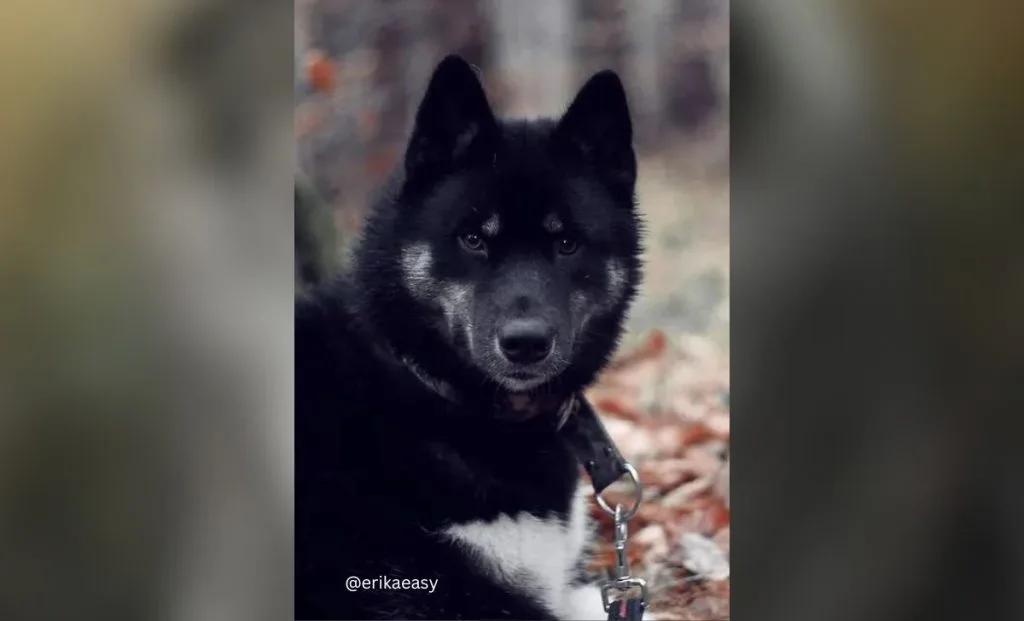
Like the KB Domino Agouti, this color has no official name. Most people call these dogs black and white, but they are genotypically and phenotypically different.
Like the KB domino agouti, the KB allele again cannot make the dog wholly black, and we often see points on the pups (it can span in color from tan to white) and a dingy grey coloration on the face.
These pups look similar to regular E-based points; thus, they are lumped together here.
Combined with the Em allele instead of the E, these pups will appear solid black with a small amount of cream coloration on their legs.
9. Red KB Domino Tanpoint (no official name)
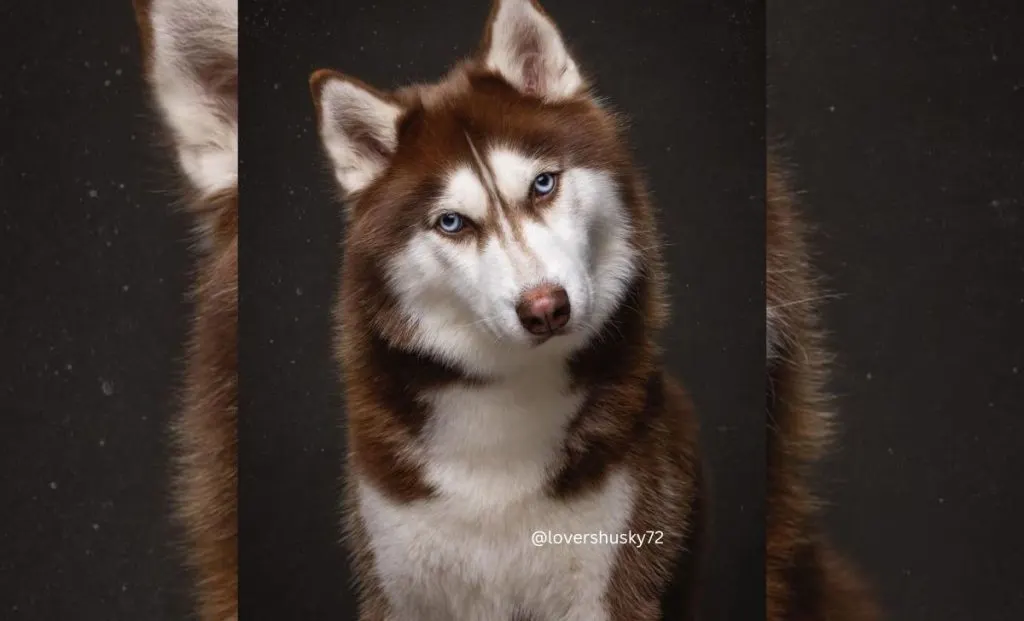
These dogs are like the black-based version, but the black pigment is now brown.
10. Solid Black Or Seal – Solid Red Or Red Seal
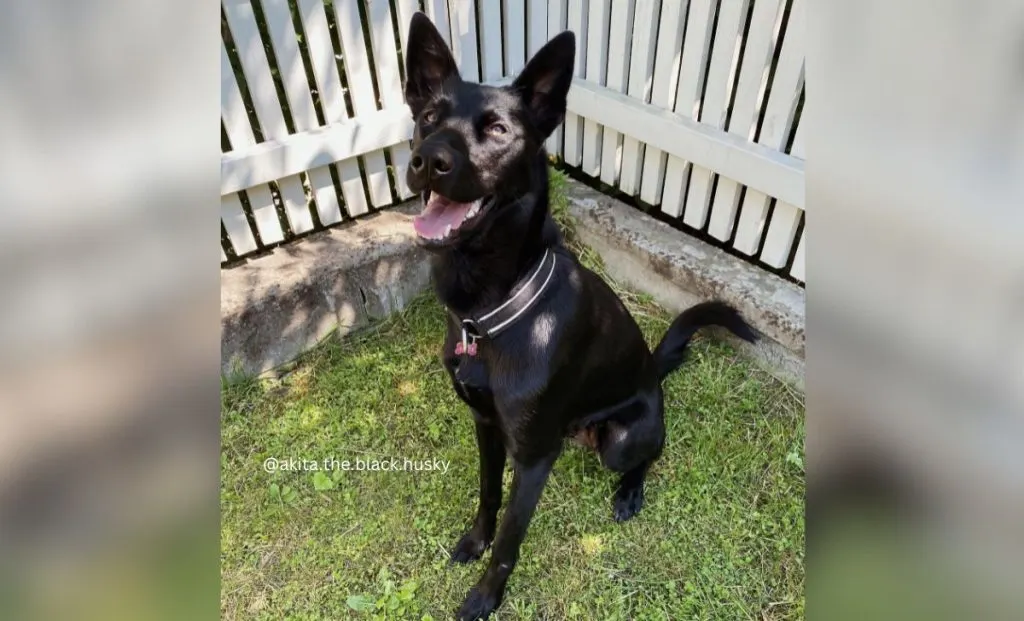
This combination can have any locus haplotype, unlike all the other colors with a specific locus haplotype.
When the E or the Em combines with the KB, the KB allele increases the production of the eumelanin pigment, resulting in a solid black or brown dog.
Sometimes, ASIP can interact with the pathway (specifically Ay or Aw alleles) and make a small amount of the pheomelanin, resulting in a seal color.
Still, the exact genetics of this combination are unknown at this time.
11. White
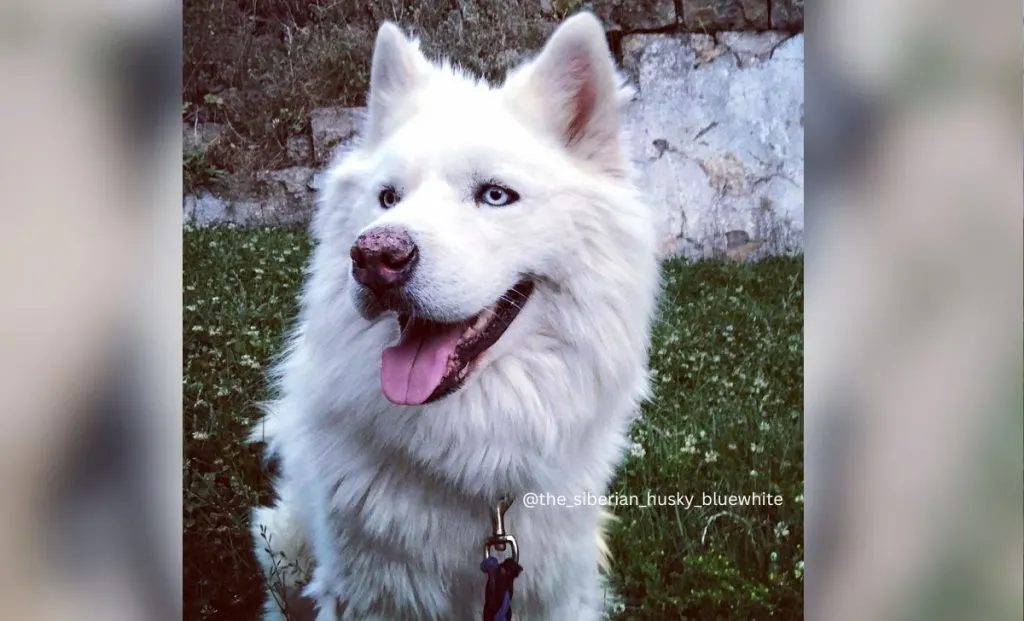
White color results from a loss of function mutation at the MC1R gene, also known as the E locus gene.
When pups have two copies of this mutation, they cannot make black or brown pigment in their coat, and only the yellow pigment is made, which can range in color from a yellow cream to pure white.
Currently, two known mutations in Siberians can give this color: e1 and e3. Combining these two alleles will make a white (or cream) pup.
It is not uncommon for these pups to have darker cream color on their bodies, especially as puppies.
The B locus still controls the color of the nose, so B/- whites have black noses, whereas those that are Bb will have brown noses.
The extreme piebald is a second genotype that can also produce an entirely white dog.
Although this color is not so standard, it is straightforward to distinguish from the ee white-colored dogs simply by the color of the eye rims on the dog.
Extreme piebald white dogs will always have pink eye rims, while the ee whites will always have black or brown eye rims.
12. Piebald
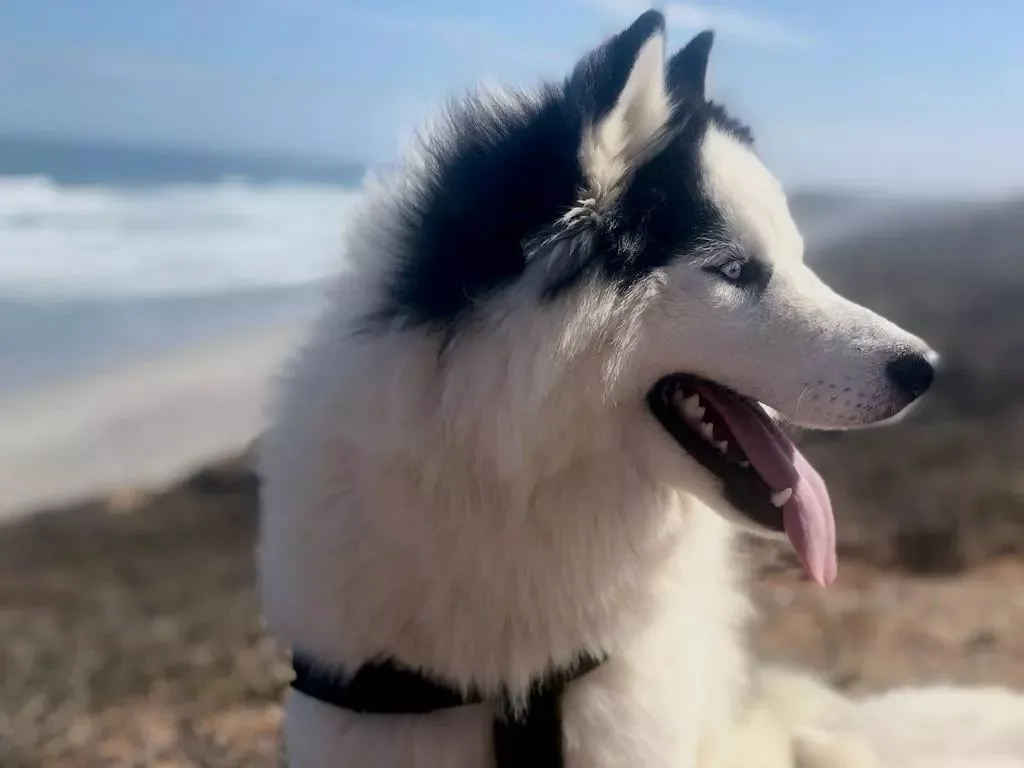
The piebald phenotype results from a defect in pigment cell migration, preventing pigmentation in the white-spotted areas. All of the Husky colors can come in piebald.
The amount of white spotting on the dog appears to be additive with increased causative mutations in this gene.
Extreme white can result in an all-white dog, easily distinguished from a white dog, with pigmentation on the eye rims of the dog.
Note that since these mutations usually result in defective pigment cell migration, it is possible the inner ear of the dog will not be pigmented.
Dogs with more prominent white markings, especially on their head, may have congenital hereditary deafness if the pigment cells are absent from the inner ear.
The prevalence varies by breed. Congenital sensorineural deafness has been reported in the Siberian Husky with an excess of piebald white coat pigmentation.
Importantly, unilateral hearing impairment is difficult to detect in dogs without a BAER hearing test.
13. Sable (Dominant Yellow)
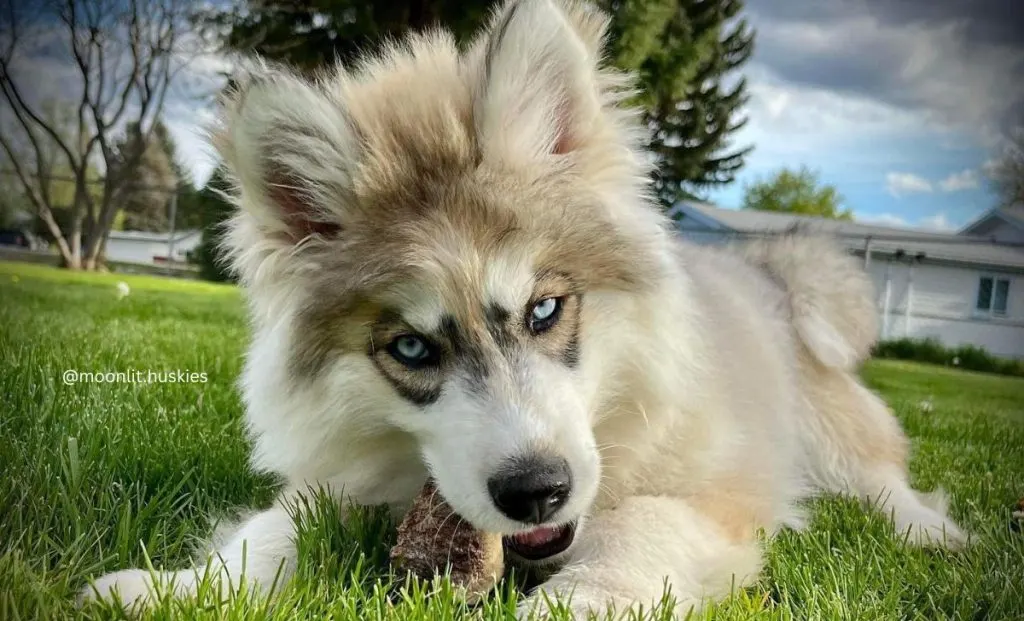
Sable results from a gain-of-function mutation in the ASIP gene, mainly in the hair cycle promoter (HCP1). This means that pheomelanin is more in production while eumelanin is much less.
Phenotypically, these pups will have black tipping over a yellow coat in adulthood.
Nevertheless, E background sables are mostly born quite dark and will progressively lighten with time (we can note that the VP2 promoter will give black tipping [also known as the shaded yellow sable combination] than the VP1 [known as a dominant yellow sable] in adulthood).
A-background sables are born much lighter and look similar to an adult. It is not the actual intensity of the pheomelanin that defines a sable; instead, the more significant amount of pheomelanin (decrease in eumelanin) is the defining characteristic of this color.
Other genes control the intensity of the pheomelanin and can range from red color to white.
Since most Huskies are ii at the Intensity locus, most sables are cream to white with some black tipping; however, an E, I- genotype combination has more intense red coloration.
As an adult, it can be challenging to distinguish E from eA in this color.
14. Saddleback
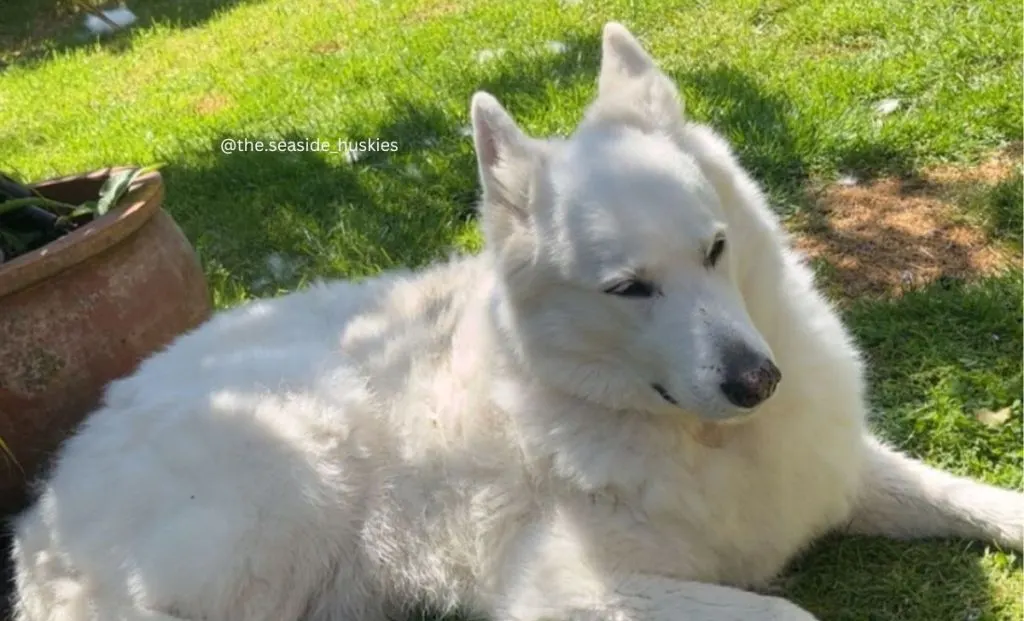
The black-colored (or brown-colored) saddleback is very similar to the tanpoint.
The main difference is that much of the eumelanin on the head and body of the dog recedes to the dorsal area as the pup ages, leaving behind something we call a saddleback pattern.
This phenotype happens when the VP1 promoter is mixed with the previously mentioned loss-of-function hair cycle promoters that produce the tanpoint coloration (HCP 3-5) at the ASIP gene.
The same effect can be observed in agouti-based pups (HCP2) when combined with VP1 so that most of the eumelanin recedes and the pup is lifted with a shaded saddleback pattern in the dorsal area.
In Conclusion
The broad range of colors and patterns is very common in the Siberian Husky, so there are no actual rare colors or patterns. The rarest Siberian Husky coat color is likely white, while piebald is probably the most unusual pattern.
We didn’t mention Brindle or Merle patterns because there is evidence that they are impossible in the pure breed Siberian Husky. The Merle pattern, in particular, can be dangerous to your dog’s health, so most breeders recommend avoiding these patterns.
We hope you enjoyed reading over our quick look at the vast array of colors available in the Siberian Husky. Many of them are distracting, and none are difficult to obtain.
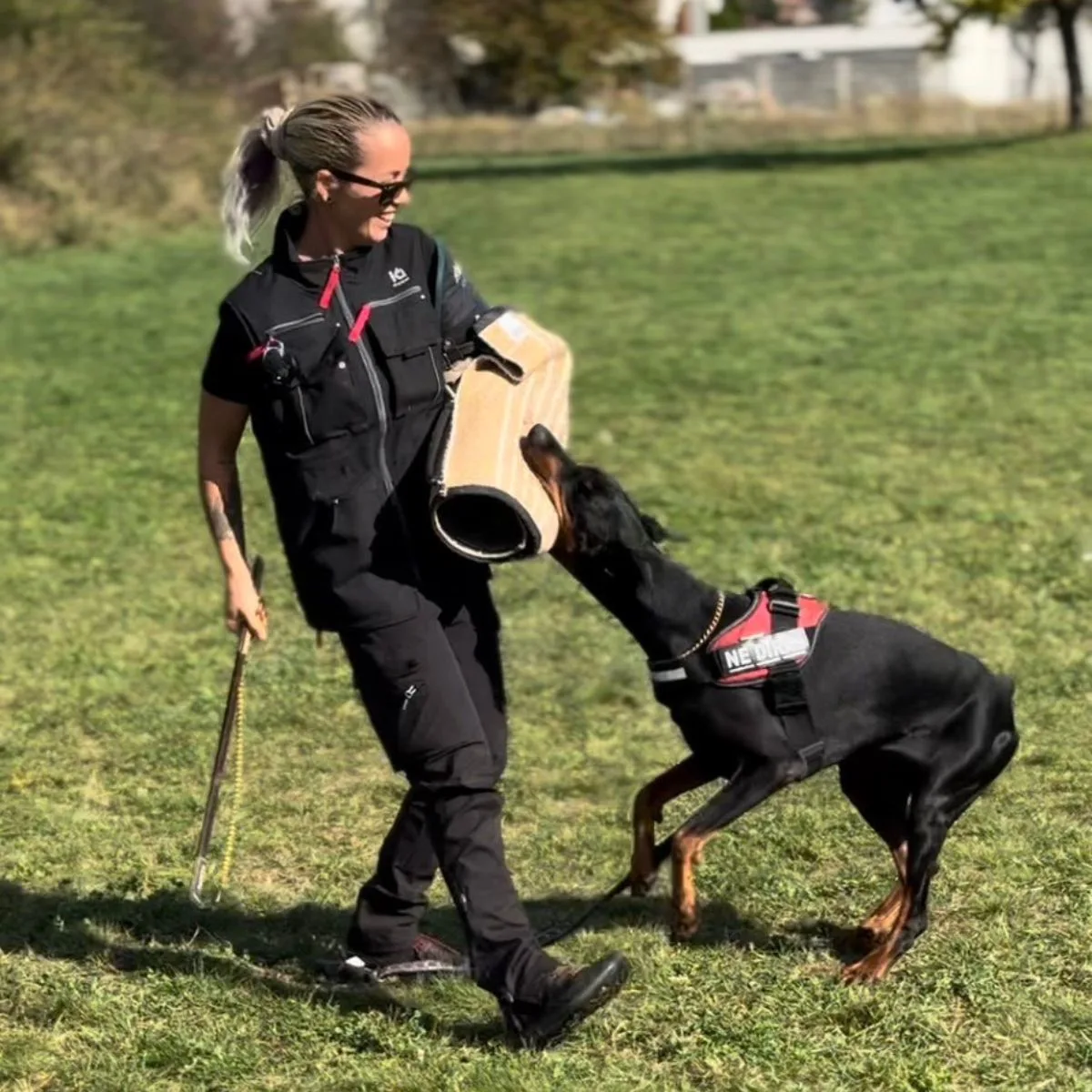
Nandina has been a lifelong dog owner and enthusiast. She shared her home with multiple breeds, including Giant Schnauzers, Cane Corsos, and Huskies. Currently, she is raising a three-year-old rescue and a working-line German Shepherd puppy.
Actively engaged in IGP dog sports for two years, Nandina is a certified instructor for basic obedience and socialization. She works as a trainer in her local dog sports club, and in her spare time, she handicrafts biothane gear for dogs.
